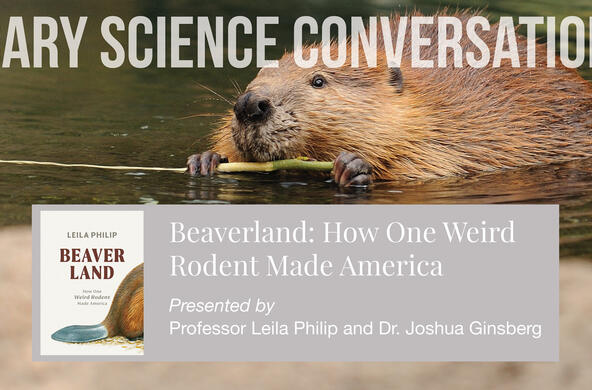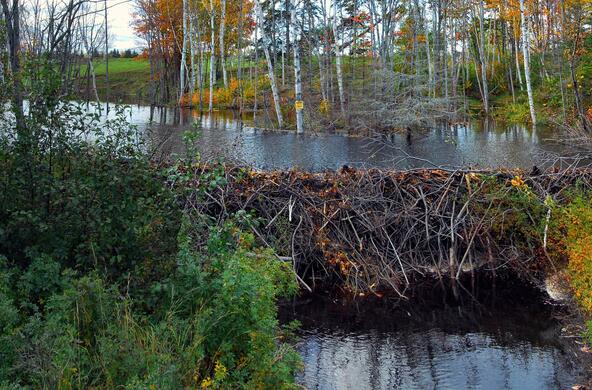This past summer, we unexpectedly found a very rare freshwater mussel in one of the small tributaries of the Housatonic River basin – a species that hadn’t been seen in the region since 1843. When a reporter asked me how I felt when we found the mussel, I was of course completely unprepared for the question, and stammered out some sort of weak response. But now that I’ve had the time to consider the question, I guess I’d say that it felt like we had unexpectedly come across a little piece of the rainforest still standing amid the farm fields and suburbs of southeastern New York.
When Europeans first came to the streams and rivers of eastern North America, they would have seen dozens of kinds of catfish, some as small as your finger and some as large as your uncle, an armored needlefish that grew up to 10 feet long, which they would call the alligator gar, shoals of silvery shads, and dozens of kinds of darters and minnows – tiny fish so colorful that they would look at home on a coral reef. If they had looked closely, these early explorers might have noticed that the rivers contained hundreds of species of freshwater mussels, some as large as a dinner plate, and as many kinds of crayfish. None of these animals would have been familiar to the Europeans, because with just a handful of exceptions, none of these animals lived anywhere other than North America. Indeed, many of these animals lived in only one or two rivers, a restriction that would unhappily contribute to their later demise.
The streams and rivers of eastern North America, especially the Southeast, were the freshwater equivalent of the tropical rainforests or coral reefs. To a degree matched only by a few ancient lakes like Baikal and Tanganyika, and a few rivers such as the Amazon and Mekong, our streams and rivers supported an enormous array of fish, turtles, shellfish, and other species that lived nowhere else on Earth. Every schoolchild knows that rainforests and coral reefs are filled with wonderful plants and animals that live nowhere else on Earth, that have fascinating habits and adaptations, and that are imperiled by human activities. But very few people, even those who grew up among the remnants of the great southeastern center of diversity, know about its remarkable diversity and peril.
Not much now remains of the great southeastern “rainforest”. All of its principal rivers – the Ohio, Tennessee, Alabama, and Cumberland – were dismembered and converted into pools and reservoirs by a series of hydroelectric and navigational dams. Pollution from factories, mines, cities, and careless land use practices killed countless animals outright, or made stream and river habitats unsuited to the needs of their former inhabitants. Dredging, channel straightening, and dike-building destroyed more habitat, and blocked animals from moving freely between rivers and their floodplains, which were vital nursery areas for many species. And poorly regulated harvests of fish and shellfish, or careless introductions of species like carps and zebra mussels from other parts of the world have imperiled native species.
As a result, many species have disappeared forever from our streams and rivers (and from the planet). Biologists have documented the extinction of at least 60 species of fish and shellfish from eastern streams and rivers (by way of comparison, no more than 7 species of birds and mammals from the continental United States have gone extinct), and hundreds of additional species are so critically imperiled that they may disappear during our lifetimes. And these are just the species that we know about – while biologists were watching fish and shellfish disappear, smaller creatures were slipping quietly into oblivion, destroyed by humans before we even discovered them.
It can be hard to see the rainforest as something special when you’ve lived there all your life. The St. Joe becomes just another muddy river, the same as every other river in Ohio, running behind gas stations and ball parks, and coming up to flood the corn fields every spring. We need to see Ohio as the early explorers did, running with clear streams that were filled with bright fishes. Then, we need to see the muddy old St. Joe as a little bit of this ancient Ohio, still improbably supporting the world’s embattled last populations of catspaw and rabbitsfoot mussels and sand darters that once ranged across the state. And if we hope that the Brazilians and Filipinos will accept their responsibilities for protecting the rainforests and coral reefs that are part of our shared inheritance, we must also hope that we can understand and accept our responsibility for protecting the streams and rivers that are part of that same legacy.
So when the reporter asked what it felt like to find that rare mussel, I should have said: it felt like I had glanced into the little patch of woods behind the Wal-Mart and seen the bright flash of a macaw’s wing. It felt like I had peered into the murky waters of a harbor somewhere and seen through the oil sheen a school of angelfish swirling around a single coral head, somehow miraculously intact. But I’ve never been that quick with an answer.







